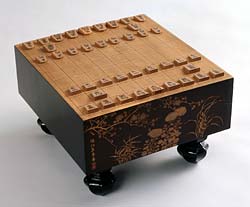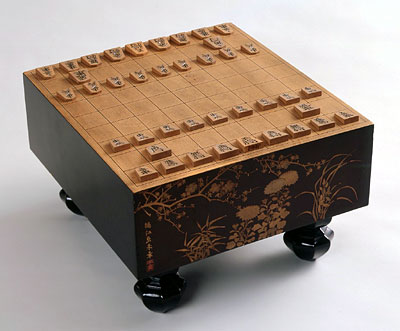| War and Territory | 
|
||||||||||
|
Shogi:
Japan’s Game of Generals
Similar to various types of chess found in many parts of the world,
shogi is a game played by two contenders, moving their
pieces alternately with the goal of capturing the opponent’s
king. A shogi board has a grid of eighty-one squares (nine
squares on each side); forty pieces are used in the game. The king,
called osho (or gyokusho), is positioned at the
center of the first row (i.e., the row closest to the edge of the
board on each player’s side). Moving outward from this center
piece in the first row, on each side, are the gold general (kinsho),
silver general (ginsho), knight (keima), and lance (kosha).
The most powerful piece, the bishop (kakugyo), which moves
in a manner similar to the bishop in chess, is positioned at the
second square from the left in the second row; and the rook (hisha),
which moves like the rook in chess, is placed at the second square
from the right. The entire third row is fortified by hohei
(literally, infantry), similar to pawns.
|
Nakajima Raisho (1796–1871) |
||||||||||





